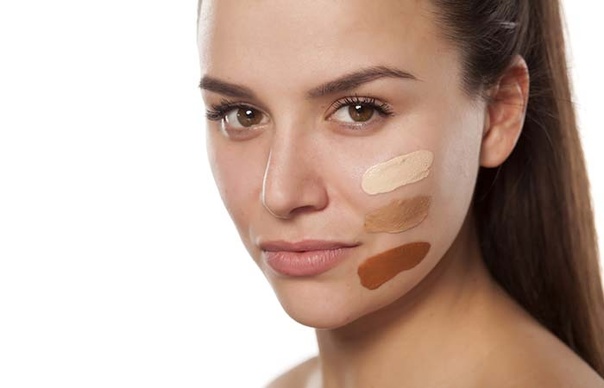Finding the perfect foundation is a crucial step in achieving flawless makeup. The right foundation not only enhances your natural beauty but also serves as the base for the rest of your makeup. However, choosing the right shade and formula can be daunting, especially when considering different skin tones, undertones, and individual skin needs.
In this blog, we will guide you through the process of selecting the perfect foundation for different skin tones, covering everything from undertones to application techniques. Additionally, we’ll explore how institutions like Benci International Academy can help budding makeup artists master the art of foundation matching.
Why Choosing the Right Foundation Matters
The foundation creates a uniform base for your makeup, covering imperfections, evening out skin tone, and enhancing your natural complexion. A mismatched foundation, however, can look unnatural, cakey, or unflattering. Finding the right product ensures a seamless, radiant, and professional finish.
Understanding Skin Tones and Undertones
1. What is Skin Tone?
Skin tone refers to the surface color of your skin, ranging from fair to deep. It is typically classified into:
- Fair: Light skin that burns easily and rarely tans.
- Light: Slightly darker than fair with warm or cool undertones.
- Medium: A neutral or warm complexion that tans easily.
- Olive: Medium skin with greenish or yellow undertones.
- Deep: Darker skin tones with cool, warm, or neutral undertones.
2. What are Undertones?
Undertones are the subtle hues beneath your skin that affect how colors appear on your skin. They fall into three categories:
- Warm Undertones: Yellow, peachy, or golden hues.
- Cool Undertones: Pink, red, or blue hues.
- Neutral Undertones: A mix of warm and cool hues.
How to Determine Your Undertone
1. Vein Test
Look at the veins on your wrist:
- Green veins indicate warm undertones.
- Blue or purple veins suggest cool undertones.
- A mix of both points to neutral undertones.
2. Jewelry Test
- Gold jewelry flatters warm undertones.
- Silver jewelry complements cool undertones.
- Both suit neutral undertones.
3. Sun Reaction
- Skin that tans easily likely has warm undertones.
- Skin that burns easily may have cool undertones.
Types of Foundations
1. Liquid Foundation
- Ideal for most skin types.
- Offers buildable coverage and a natural finish.
- Available in dewy or matte formulas.
2. Powder Foundation
- Best for oily or combination skin.
- Provides a lightweight, matte finish.
- Easy to reapply throughout the day.
3. Cream Foundation
- Suitable for dry or mature skin.
- Offers high coverage with a dewy finish.
- Requires careful blending for a natural look.
4. Stick Foundation
- Convenient for travel or quick touch-ups.
- Provides full coverage and easy application.
- Works well for normal to dry skin.
5. Tinted Moisturizers and BB Creams
- Ideal for light coverage and a natural look.
- Hydrates the skin while evening out the complexion.
- Best for dry or combination skin.
How to Choose the Right Foundation
1. Match Your Skin Tone
Always test foundation shades on your jawline or neck, as these areas provide a more accurate match than your hand.
2. Consider Undertones
- Choose warm-toned foundations for yellow or golden undertones.
- Opt for cool-toned foundations for pink or blue undertones.
- Neutral undertones pair well with beige-based foundations.
3. Choose the Right Formula
- Dry Skin: Look for hydrating or dewy-finish foundations.
- Oily Skin: Choose mattifying or oil-free formulas.
- Combination Skin: Use a formula that balances hydration and oil control.
- Sensitive Skin: Opt for fragrance-free and hypoallergenic foundations.
4. Test in Natural Light
Always evaluate your foundation in natural daylight to ensure an accurate match. Artificial lighting can distort the true color of the product.
5. Understand Coverage Levels
- Sheer Coverage: Enhances natural skin while minimizing minor imperfections.
- Medium Coverage: Covers uneven skin tone and light blemishes.
- Full Coverage: Masks discoloration, scars, or severe blemishes.
Foundation Tips for Different Skin Tones
1. Fair Skin
- Opt for shades with pink or neutral undertones.
- Avoid overly yellow or dark shades, which can look unnatural.
- Light coverage foundations work well to enhance the natural complexion.
2. Light Skin
- Choose foundations with beige or peach undertones.
- Consider sheer-to-medium coverage formulas for a natural glow.
3. Medium Skin
- Look for golden or olive undertones.
- Avoid ashy or overly pink shades, which can appear dull.
- Liquid or cream formulas add warmth and luminosity.
4. Olive Skin
- Neutral or yellow-based foundations complement green undertones.
- Avoid overly cool or reddish shades, which can clash with the natural tone.
5. Deep Skin
- Rich, warm shades with red, blue, or neutral undertones work best.
- Ensure the foundation does not appear grey or ashy.
- Cream or liquid formulas provide a radiant finish.
Common Foundation Mistakes to Avoid
- Choosing the Wrong Shade
Testing multiple shades before purchase is essential. - Ignoring Undertones
A mismatch in undertones can result in an unnatural finish. - Skipping Primer
Primer creates a smooth base, ensuring even application. - Applying Too Much Product
Build coverage gradually to avoid a cakey appearance. - Not Setting the Foundation
Set your foundation with a translucent powder or setting spray to enhance its longevity.
Tools for Foundation Application
1. Brushes
- Flat brushes provide high coverage.
- Stippling brushes create an airbrushed effect.
2. Sponges
- Beauty sponges ensure a seamless, blended finish.
- Best used damp for an even application.
3. Fingers
- Great for blending cream or stick foundations.
- Offers natural, skin-like results.
Professional Training at Benci International Academy
Mastering foundation selection and application requires a blend of theoretical knowledge and practical skills. At Benci International Academy, aspiring makeup artists learn to:
- Analyze skin tones and undertones.
- Choose the right foundation formula for different skin types.
- Apply foundations flawlessly using advanced tools and techniques.
With hands-on training and expert guidance, students gain the confidence to excel in the beauty industry.
Conclusion
Choosing the right foundation for different skin tones is an art that requires understanding skin types, tones, and undertones. By selecting the right shade, formula, and application method, you can achieve a flawless and natural finish.
For those passionate about makeup artistry, institutions like Benci International Academy provide the perfect platform to refine their skills and build a successful career. Whether you’re a professional makeup artist or someone looking to perfect their personal routine, mastering the art of foundation is the first step towards beauty excellence.



